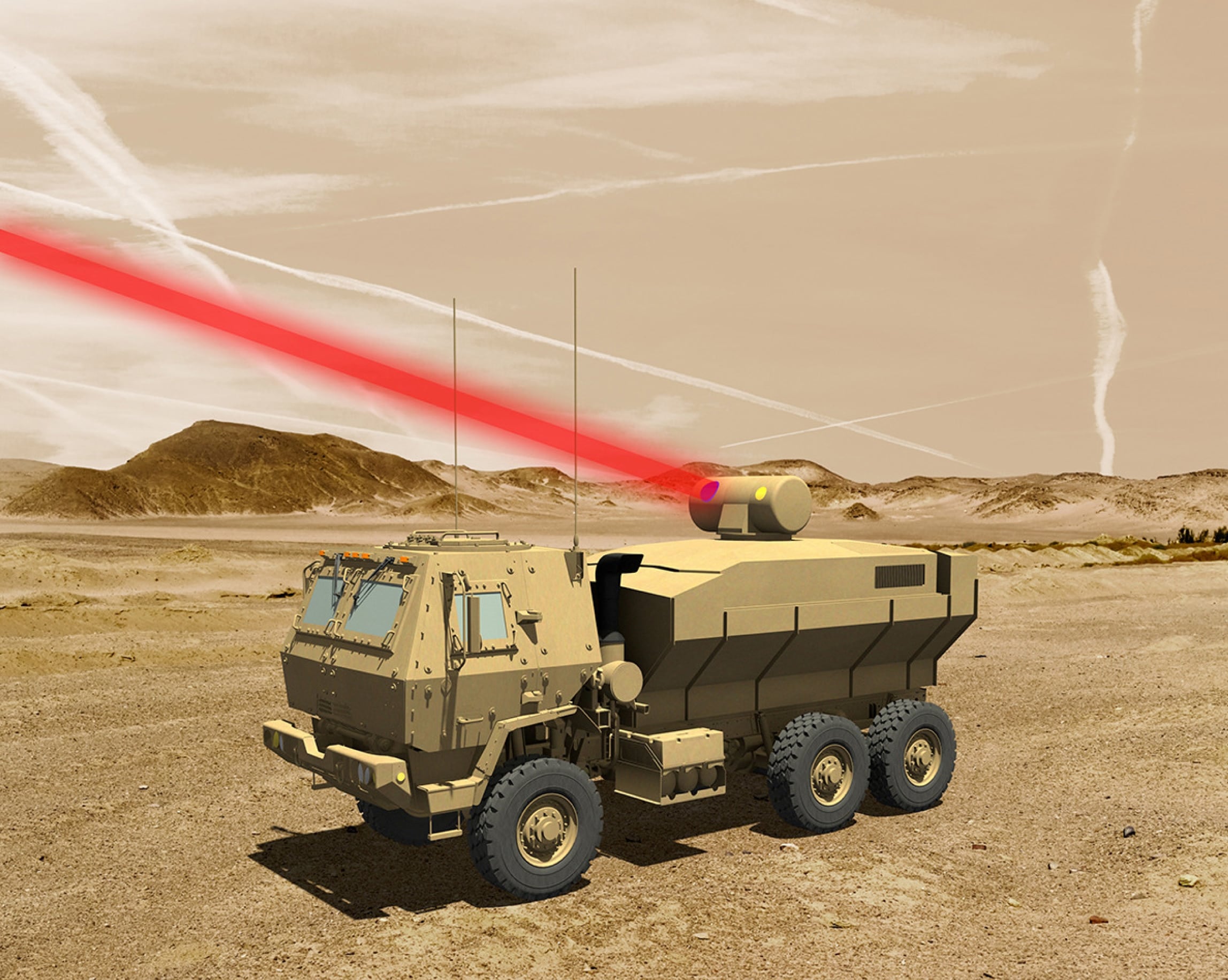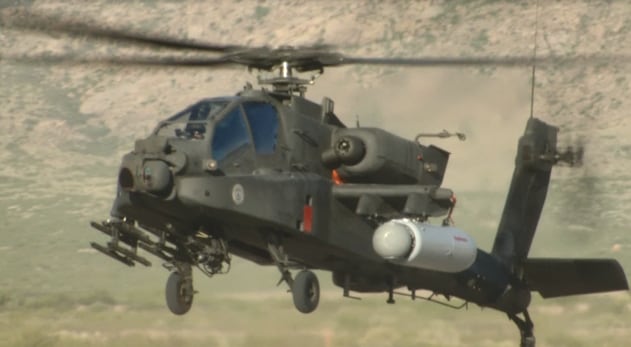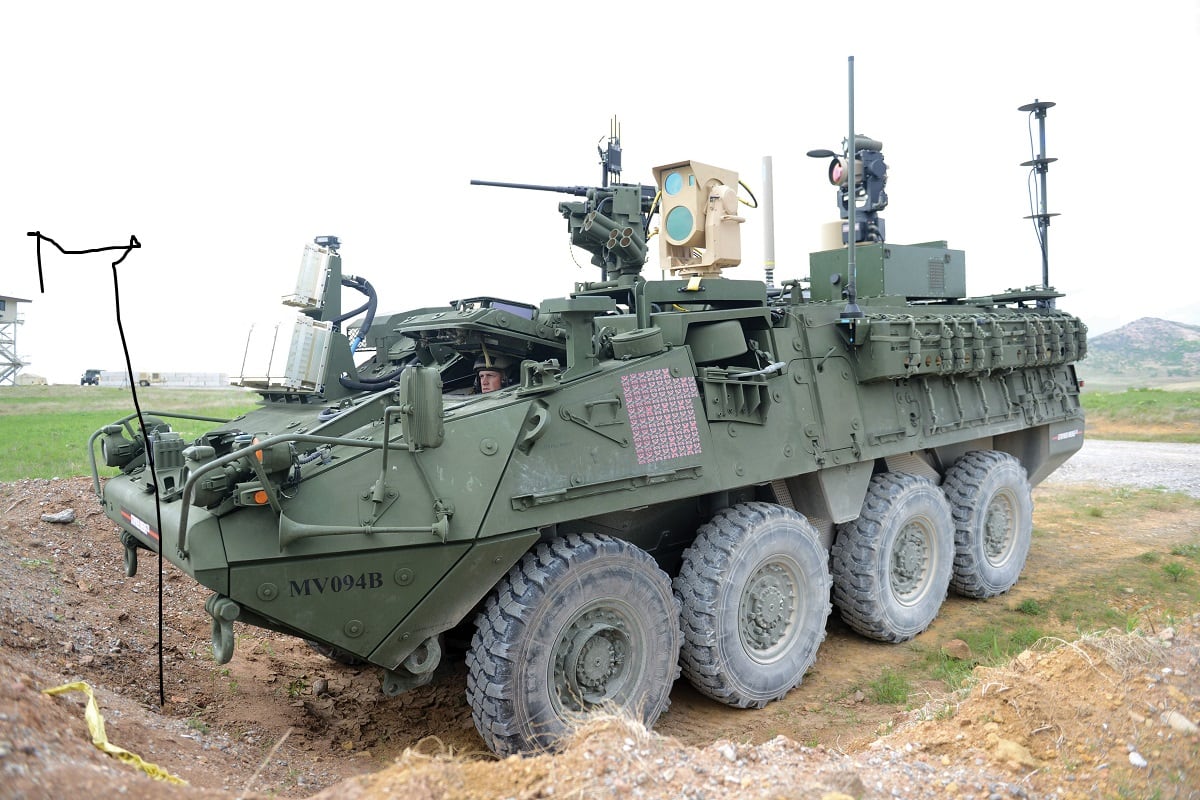
WASHINGTON — Rolls-Royce has been quietly developing an integral system required to operate laser weapons on the battlefield for about a decade in its LibertyWorks division, which is the company’s internal advanced technology unit based in Indianapolis.
But the company is ready to go public on the technology it has internally funded, having taken it through extensive testing, Mark Wilson, LibertyWorks’ chief operating officer, told Defense News in a May 9 interview.
That technology is an integrated power and thermal management system capable of powering a 100-kilowatt-class laser weapon, according to Wilson.
The system uses the company’s well-known M250 helicopter engine — that was used in the OH-58D Kiowa Warrior helicopter and is also found in the Little Bird and the AH-6i helicopters — which allows the system to generate roughly 300 kilowatts of electrical power and 200 kilowatts of thermal management capacity, Wilson said.
But the system is also considered hybrid as it combines a battery with the engine.
Rolls-Royce is “a power and propulsion company and so about 10 years ago, we started thinking more about electrification. You can see it in today’s hybrid cars, hybrid trains, same thing in marine applications,” Wilson said.
“We saw this capability of using a turbine engine and a battery combined to operate propulsion systems was potentially coming,” Wilson said, “so we started looking at electrification and then said, ‘Oh, there are also some unique opportunities when you look at what a directed-energy system needs. It needs a lot of power, it needs to be power dense and needs thermal technology as well and we are good at those types of capabilities.’”
The engine “allows us to have continuous operations as long as you have fuel available,” which leads to an endless magazine of laser shots, he said.
The battery allows “instantaneous power, so you don’t have to have the engine running all the time,” Wilson said. “You can start running on the battery and then switch over to the turbine engine once it’s up to speed.”
And the engine, when it’s running, can recharge the battery, he added.
RELATED

The system is designed to fit inside the same vehicle as the laser weapon itself. Up until now, demonstrations of laser systems have focused on scaling and building up the technology of the weapon itself and so the services have used commercial off-the-shelf diesel generators and cooling systems that require a separate trailer.
“Our idea here is we want to package it in a size that can fit along with the laser system onto a vehicle, a type of a truck or eventually a ship or even eventually airborne, so the focus of our research is on developing that kind of capability that can go on an actual platform,” Wilson said.
RELATED

To date, Rolls-Royce has done “quite a bit of work” in terms of designing, testing and modeling the system. The company plans to go through another round of testing beginning soon and lasting through the end of May and possibly into June.
That testing is in preparation for sending the system down to be field-tested this year with Lockheed Martin’s laser weapon system.
Lockheed Martin, partnered with Dynetics, is competing — head-to-head with Raytheon — to build a powerful 100-kilowatt laser for the U.S. Army, which pushes the envelope on directed-energy capability development.
The winner of the competition will integrate its laser system onto the Family of Medium Tactical Vehicles (FMTV).
And that is the size of truck that Rolls-Royce has its eye on for fitting its own power and thermal system.
But the company believes its technology is scaleable when it comes to powering different laser weapons and when it comes to the platform on which a laser weapon might find itself, Wilson said. That could be an Army vehicle, a naval vessel or a medium transport airlifter.
The Army, for instance, is testing laser weapons on a Stryker combat vehicle.
RELATED

“Our goal is to develop technology for continuous operation,” Wilson said, but, “if the customer doesn’t need that and packaging is more important, we’ve got the tools now to be able to translate to other applications.”
The goal is for the services to see the utility of such a system because it will allow “customers to move past current low-power, low duty-cycle demonstrations by solving many of the difficult issues integrating high-power output with matching levels of thermal management,” Wilson said in a May 10 statement.
Jen Judson is an award-winning journalist covering land warfare for Defense News. She has also worked for Politico and Inside Defense. She holds a Master of Science degree in journalism from Boston University and a Bachelor of Arts degree from Kenyon College.







